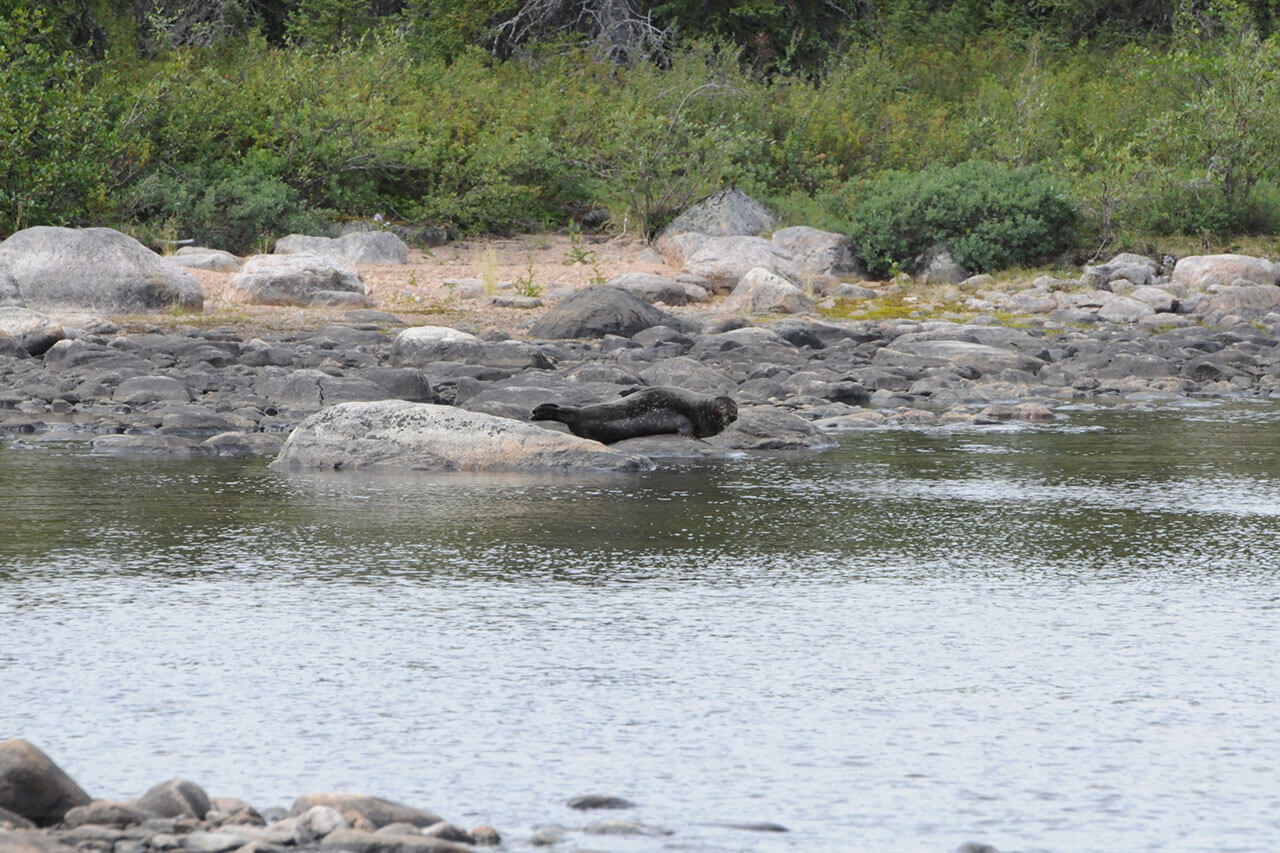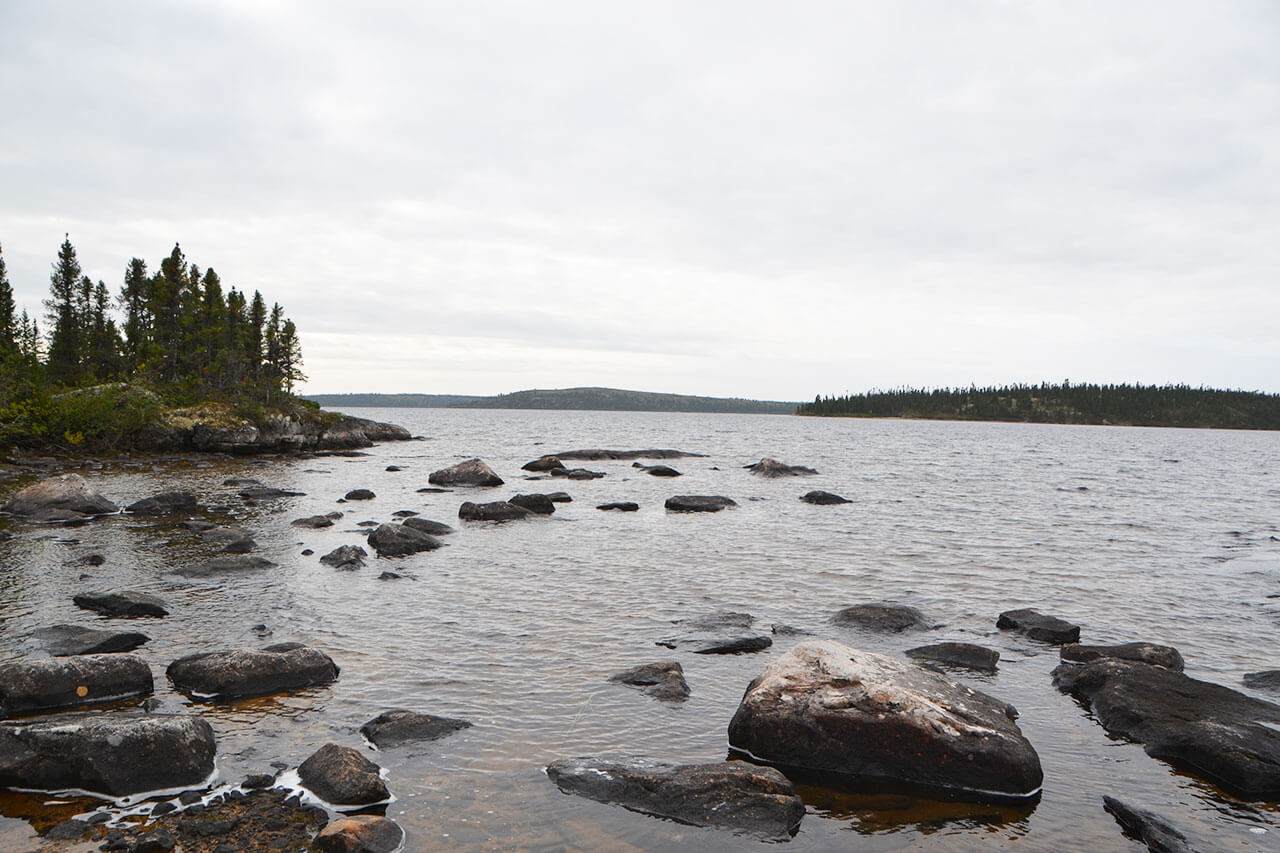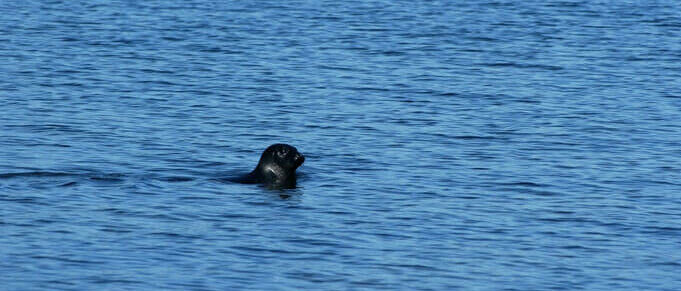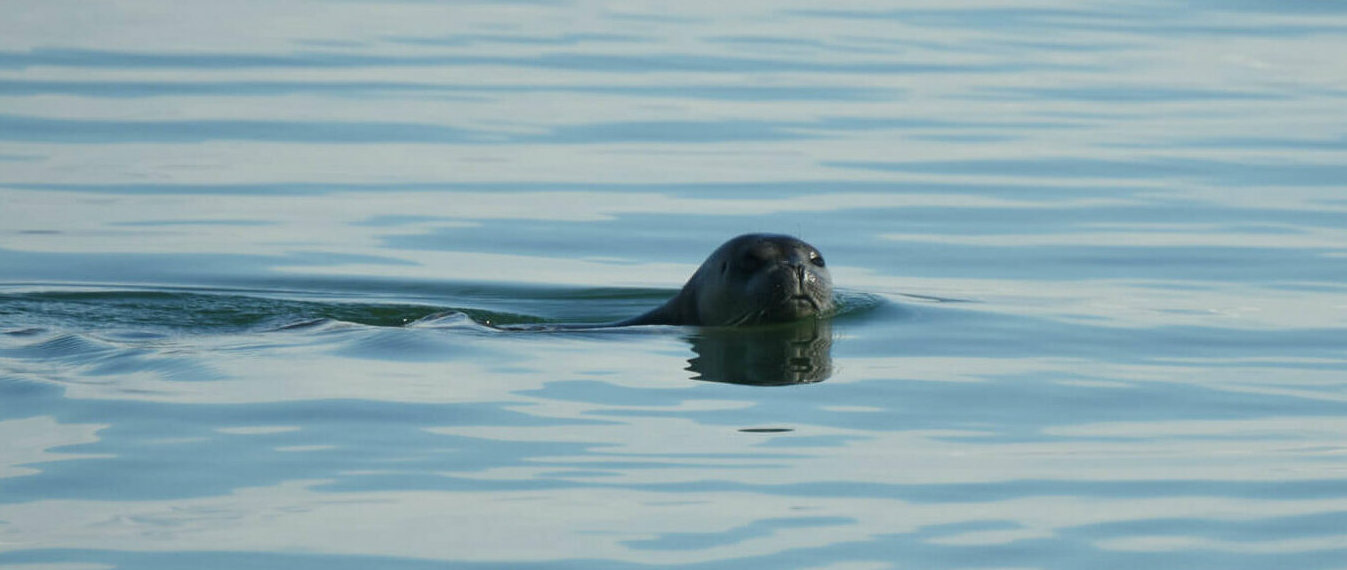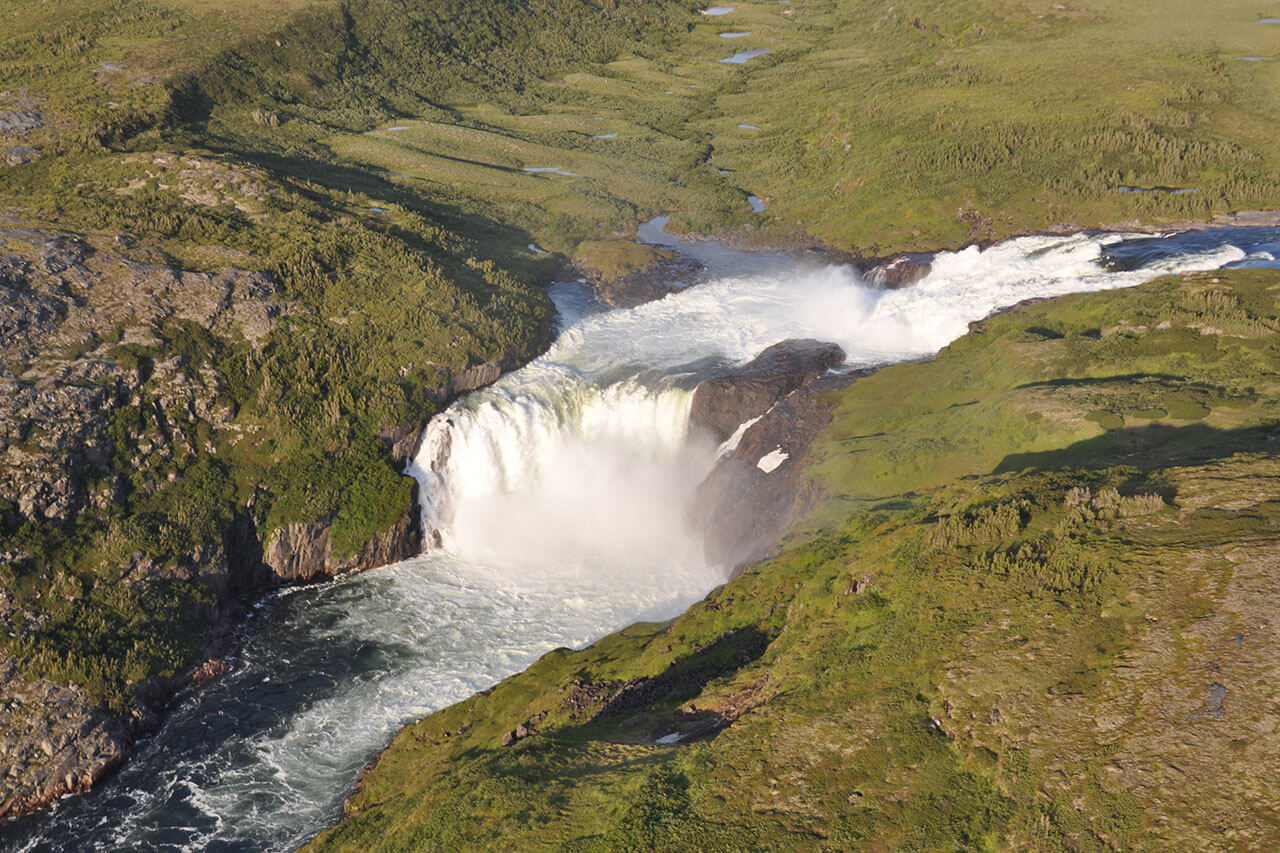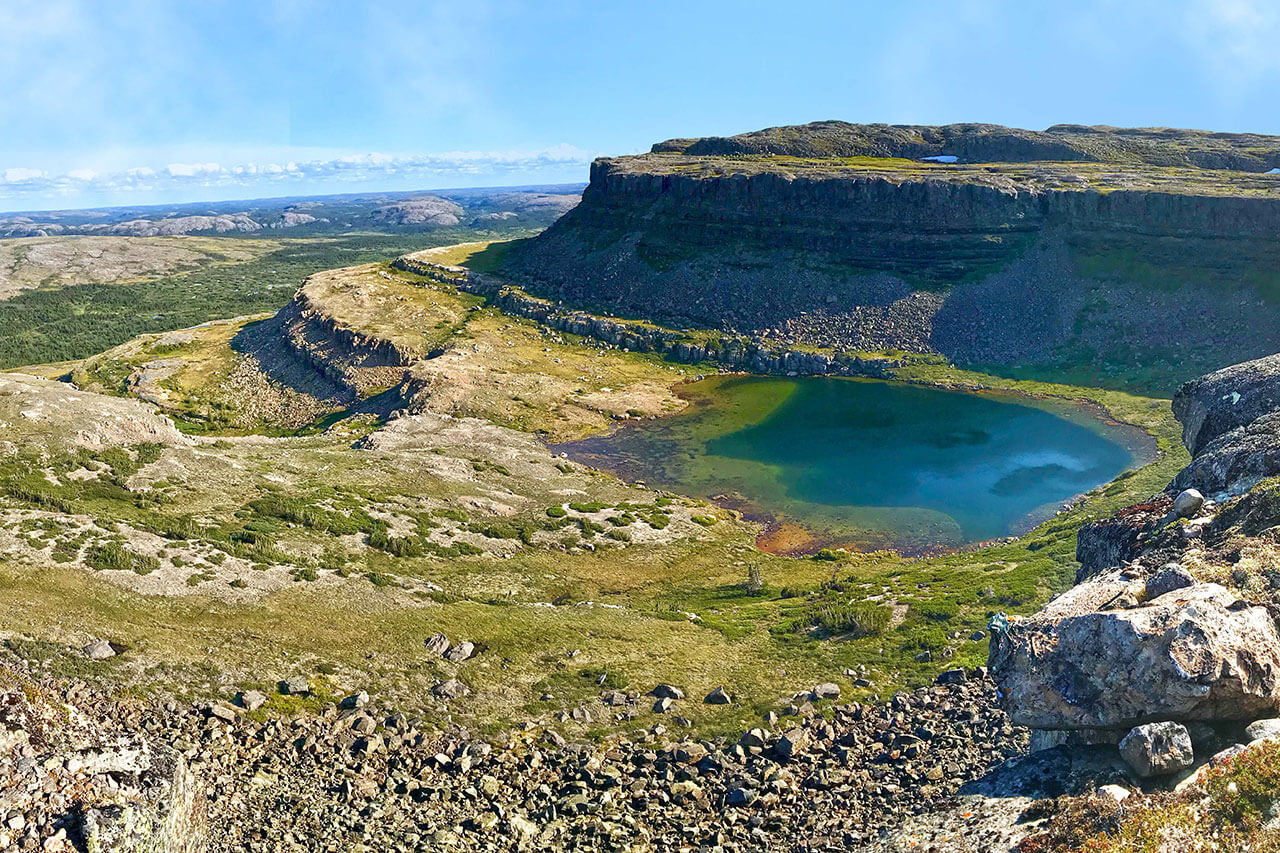Ever heard of the mysterious and legendary achikunipi, as this animal is known to the Cree? Or the qasigiaq, the name used by the Inuit? This great adventurer and pioneer of fresh waters is a subspecies of harbour seal. In the collective imagination, seals are associated with the sea and salt water. But this mythical trailblazer is exclusively confined to fresh water in the Ungava Peninsula. We’re talking about the Lacs des Loups Marins subspecies of the harbour seal (Phoca vitulina mellonae), which is characterized by a single population endemic to Quebec.
How did it get there?
Scientists hypothesize that part of the population of marine harbour seals arrived inland together with the post-deglaciation incursion of the Tyrrell Sea. The subsequent withdrawal of water is then believed to have landlocked them in the Lacs des Loups Marins basin between 3,000 and 8,000 years ago.
How does it differ from marine seals?
Being a subspecies of the harbour seal, it mostly resembles the nominal species, even if it does differ in a few respects. It has a dark coat and a larger, flatter skull. It breeds earlier than other harbour seals, i.e. early May as opposed to June for marine seals at the same latitudes. Its range being entirely in fresh water, it feeds on fish such as lake whitefish, lake trout, lake cisco and brook trout. It is also genetically distinct from its cousins. Indigenous people who are familiar with this subspecies consider its fur softer and glossier. It is also said to be smaller and that its flesh has a distinct flavour.
Attacked from all fronts, where to turn?
Its restricted range and the small size of its population – estimated at between 50 and 600 individuals – make it vulnerable. In April 1996, it was designated “Special Concern,” before being uplisted to “Endangered” in November 2007 during a status reassessment by the Committee on the Status of Endangered Wildlife in Canada (COSEWIC). The population is also genetically and geographically isolated, which limits its recovery potential.
A few external threats may also contribute to the extinction of this freshwater seal, namely the construction of hydroelectric dams. This type of power plant would have an impact on currents and decrease the number of open water patches in the subspecies’ winter habitat. The harbour seal lacks long claws on its front flippers that would allow it to bore and maintain holes in the ice to breathe. The animal therefore depends on these permanent open water areas. Its northern freshwater habitat is quite a challenge since fresh water crystallizes at a higher temperature than does salt water. The intensity of the current is therefore a crucial element for maintaining permanent open water areas. Constantly flooded vegetation can also emit methylmercury as it decomposes, a highly toxic form of mercury that can contaminate the seal’s prey. This toxic compound accumulates in the tissues of the predator and can be fatal. Prey distribution and abundance can also be influenced by the installation of such infrastructure. Global changes that are transforming the habitat of the Lacs des Loups Marins harbour seals currently represent the main threat faced by this subspecies.
Human activities such as tourism, scientific field data collection and mining can all create disturbance. Noise disturbance is not the only issue, as mining activities can also have repercussions on water quality and alter the flow of proximate water bodies. Though often opportunistic, hunting may be detrimental to this population given how small it is. Bear predation has also increased, according to some Indigenous hunters. These large omnivores appear to have expanded their range in response to climate change.
Protected, but still surrounded by potential threats
In July 2013, Parc national Tursujuq was established, an immense protected area in Nunavik spanning 26,107 km2. Even if part of the seal population’s range is not included, the park completely covers its most critical habitat. According to Quebec’s Parks Act, any utilization, harvesting or harnessing of resources for the purpose of energy production is prohibited within the confines of a park. The hydroelectric dam project has been shelved since it cannot be built on land within a national park. However, there is always the possibility that a dam could be built outside the protected area but within potential habitat for this endangered pinniped. The same goes for mining, which is not permitted within the protected area but is authorized outside its boundaries.
Tourism, which is now booming, can also disrupt the population’s essential activities. The habitat of this seal lies mostly in remote and inaccessible territory, meaning disturbance is negligible for the moment. In the future, should this threat increase, the park could implement increased protection zones within its boundaries and limit or even prohibit access altogether.
The sky may not fall on its head after all!
Is the recovery of this population possible? Indeed, recovery is considered feasible because it meets a number of scientific criteria. Individuals are able to reproduce and the population has room to expand its range in the event its population grows. Although the impact of climate change must be closely monitored, the majority of threats have already been mitigated thanks to the establishment of Parc national Tursujuq. Other habitat protection measures such as the creation of special zoning may also be put in place to ensure the long-term health of this population.


